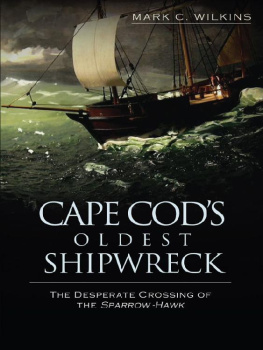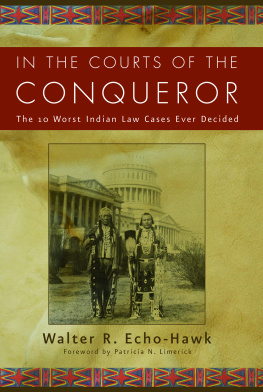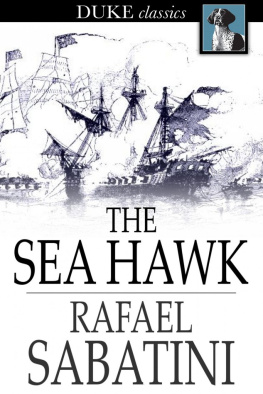

Published by The History Press
Charleston, SC 29403
www.historypress.net
Copyright 2011 by Mark C. Wilkins
All rights reserved
First published 2011
e-book edition 2012
Manufactured in the United States
ISBN 978.1.61423.844.7
Library of Congress Cataloging-in-Publication Data
Wilkins, Mark C.
Cape Cods oldest shipwreck : the desperate crossing of the Sparrow-Hawk / Mark C. Wilkins.
p. cm.
Includes bibliographical references.
print edition ISBN 978-1-59629-860-6
1. Sparrow-Hawk (Ship) 2. Shipwrecks--Massachusetts--Cape Cod. 3. Cape Cod (Mass.)--Antiquities. I. Title.
G530.S76W55 2011
910.916346--dc22
2011013955
Notice: The information in this book is true and complete to the best of our knowledge. It is offered without guarantee on the part of the author or The History Press. The author and The History Press disclaim all liability in connection with the use of this book.
All rights reserved. No part of this book may be reproduced or transmitted in any form whatsoever without prior written permission from the publisher except in the case of brief quotations embodied in critical articles and reviews.
CONTENTS
ACKNOWLEDGEMENTS
I would like to thank the following institutions for their assistance with this project: Pilgrim Hall Museum; Plimoth Plantation; the Jamestown-Yorktown Foundation; the British Library; the National Archives at Kew Gardens, United Kingdom; the Public Records Office, United Kingdom; the Virginia Historical Society; and the Massachusetts Historical Society. I would like to extend my sincerest thanks to the following individuals for their help with this book: Stephen ONeill, Karin Goldstein and Peter Arenstam, and a very special thanks to Karin Hobman.
INTRODUCTION
European expansionism during the sixteenth and seventeenth centuries was a dynamic period in Atlanticand worldhistory, the result of which was a transformation for England from the periphery of trade and influence to the center. By the end of the first quarter of the seventeenth century, British imperialism and nationalism were no longer just nascent ideologies alluded to in writings by Richard Hakluyt, John Dee and others. Importantly, by the conclusion of the sixteenth century, the woolen tradeon which England had depended for its economic vitalitywas clearly depressed, and to survive it needed to find new markets and commodities to reinfuse a sagging economy. Britain had also won its elemental struggle against Catholicism, giving birth to an umbrella Protestantism, as well as the Church of England. This transformative experience served to create ultra-radicalized factions, such as the Separatists, which, dissatisfied with that which was acceptable to a majority of the inhabitants of England, sought their utopian societies first in Holland and then on the faraway shores of America. The Pilgrims intended to build a model society to serve as an example to England of how the Reformation should have concluded. They would not equivocate or settle for an umbrella Protestantism; rather, they would forge a unique Protestant dogma that was strict, uncompromising and free from the episcopacy that seemed to perennially plague religious doctrine back in England.
However, religious freedom was not the only motivation for contemplating a voyage across the pond. America also held the promise of new commodities and, consequently, new fortunes to be made. By the end of the first quarter of the seventeenth century, economic prosperity in the form of fragrant bundles of Virginia tobacco had begun to make an impact in Londonand elsewhere. Merchant joint-stock companies began to materialize with increasing frequency as merchant coalitions dreamed of expansive tracts of land, dense with tobacco growing in the warm Virginia sunshine. No doubt, dreams of vast fortunes amassed from tobacco monopolies encircled and intoxicated the heads of these adventurers just as surely as the smoky exhalations from the object of their quest. In addition to fortunes made from tobacco, voyagers to America undoubtedly contemplated freedom from the oppressive class structures, poor economy, plagues and the very finite lands of England. In turn, the Crown saw the colonial projects as a way to rid England of unwanted or surplus populations who were flocking to London, caught in its gravitational pull of commercial vitality.
The voyagers aboard the small vessel that would come to be called the Sparrow-Hawk were such people. They also possessed a spirit of almost reckless adventure and an insatiable desire for something different and new, without which the birth of the United States never would have been possible. Moreover, the story of the Sparrow-Hawk did not end when she was shipwrecked in 162627, as her reemergence during the Civil War sparked another period of confused and somewhat problematic interpretation concerning the oldest extant shipwreck in America. Her ultimate home would be, paradoxically and ironically, the institution that represented those who expelled the crew of the Sparrow-Hawk from Plymouth some 384 years ago.
My obsession with her tired and enigmatic bones began when, as curator of a small maritime museum on Cape Cod, I was invited by my friend and colleague Stephen ONeill, curator of Pilgrim Hall Museum, to visit this anachronism. As I gazed upon her time-worn bones, it was as if I was once again seven years old and beholding my first dinosaur skeletonthe strange logic of her ribs and structure evoking a creature long departed yet exciting my imagination as to how it might have looked long ago, plowing along across the vast expanse of a wintry and windswept North Atlantic. I then worked with the Pilgrim Hall Museum to bring her back to the Cape for an exhibit on the seventeenth century. It is the aim of this book to finally give the Sparrow-Hawk and the brave, perhaps foolhardy, people who sailed on her their long-awaited due. Her story is not as morally uplifting as that of the Separatists (or Pilgrims, as they have come to be called), but it is valid, for implicit in this tale is one of the essential qualities of American economics and ethosthat of venture capitalism, entrepreneurial acumen, religiosity and a desire for a better life just a little farther westward. Her story and what this voyage represented does not fit neatly within many American historiographies of the early to mid-twentieth century, which preferred to depict the Pilgrims and those at Jamestown as distinctly different types of people. The passengers and crew of the Sparrow-Hawk were somewhat pious but also somewhat entrepreneurial; some were not chaste. Undoubtedly, there were many such voyages, which would tend to further diversify the nature of colonists during the Great Migration of the 1620s and 1630s. Even today, the tired bones of the Sparrow-Hawk remain a somewhat enigmatic anomaly that creates dissidence and arouses curiosity regarding the origins of this country. This is her story.
1
LONDON AND JAMESTOWN DURING THE 1620S
From the last quarter of the sixteenth century to the year the Sparrow-Hawk sailed (1626), London grew from a disease-infested city on the verge of economic collapse to the beginnings of a mercantile hub as the promise of economic prosperity began entering its ports in the form of bundles of tobacco from Virginia; fish from New England; sugar from the West Indies; wines, currants and raisins from Spain, Portugal and the Mediterranean; and silks, spices and pepper from China. Most of the demand for these products came from an increasingly consumptive London populace. Interestingly and importantly, both sugar and tobacco were addictive substances, and Queen Elizabeth I apparently liked sugar so much that it turned her teeth black.
Next page














